I'm an intern at the education department of a hospital, I've been tasked to turn a davenport diagram into a working interactive tool so the teachers can use it in their presentations.
I have no background/knowledge in chemistry or equation solving of this level.
The Davenport Diagram in question: https://i.stack.imgur.com/LTphs.jpg (not enough reputation to post images)
I've been on it for a couple of day now and made alot of progression with it, I used Flot.js in combination with jQuery to achieve almost identical clone of it, with the ability to drag and drop a data point, but also use user input and change the point.
Since yesterday I've hit a roadblock, I've googled a whole lot and visited many chemistry based websites just to understand to formula used by this diagram. The diagram uses the Henderson-Hasselbalch equation (Link 1).
Now my first question is, I can draw a data point using the simple coordinate based system, i.e. x = 7.20, y = 8 so the patient has Metabolic acidosis. However, I have no clue how to even begin to build a formula that also incorporates the PCO2 values (red lines).
My second question is, only possible if the first question is solved, how would I turn that formula into the coordinate system used by Flot.js?
Even just gently nudging me in the right direction will greatly help me
EDIT 1: (working solution)
I managed to build a working tool with the example provided by Mark. Since I only needed a single point to be drawn, I took the formula's out of their respective for loops.
$(".davenportInput").change(function() {
// replace the , with . so Flot/math can actually use it
var iX = $("#inputX").val().replace(',','.'); // pH
//var iY = $("#inputY").val(); // HCO3/HCOmm
var iA = $("#inputA").val(); // PCO2
var HCOmm = 0.03 * iA * Math.pow(10, iX - 6.1);
var pH = 6.1 + Math.log10(HCOmm / (0.03 * iA));
$("#inputY").val(HCOmm.toFixed());
updatePoint(pH, HCOmm); // Draws the x,y coordinates
});
